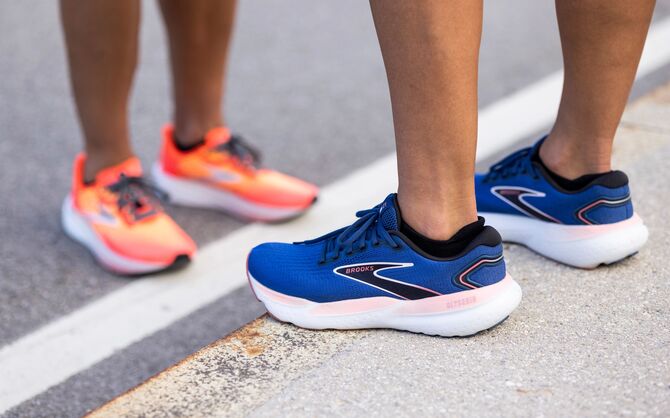Training shoes vs. running shoes: What's the difference?

New to running or cross-training? You may be tempted to repurpose your typical sneakers. However, this may not be the best idea. Here are some considerations for choosing training shoes vs. running shoes.
Put side by side, these shoes may look similar, and you may even feel your trainer is more stylish. However, when you hit the road or the trails, you'll notice differences in performance when choosing training shoes vs. running shoes.
Runner Hollie Sick has worked in running retail for over eight years, and she helped point out the main difference: movement style.
Movement style
As Sick explained, "Cross trainers are usually designed for lateral movement, whereas running shoes are designed for forward motion." That may mean the cushioning and stability of training shoes aren't where they need to be for a run, though the shoes may work fine for moving side to side while playing basketball or tennis.
A cross trainer could have less cushioning than you might need for pounding the pavement, which could potentially put you at risk for an injury. On the other hand, a running sneaker may negatively impact your performance when you're cross-training. For instance, the amount of cushioning in a running shoe could put you at risk for an injury when weight training, which typically requires a flatter shoe.
Shoe material
While a running shoe may sometimes support cross-training, the other way around doesn't always work. "Cross trainers don't support going long distances, and they often have leather or reinforced sides, which makes them bulkier," Sick noted.
Nobody wants to lug extra weight when running, so the lighter, the better. Running shoes are typically more breathable with a lot of mesh, which not only keeps your feet cooler but prevents blisters.
Speaking of blisters: You may require a larger size running sneaker than cross trainer, since your feet may swell on a run, giving you a one-way ticket to losing a toenail. (Ouch!)
If you are serious about running and cross-training, it may be a good idea to purchase separate shoes for each activity. That way, you can enjoy all of your hobbies without nursing injuries.
Our writer's advice is intended for informational or general educational purposes only. We always encourage you to speak with your physician or healthcare provider before making any adjustments to your running, nutrition, or fitness routines.

